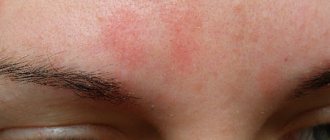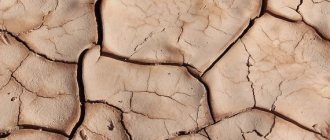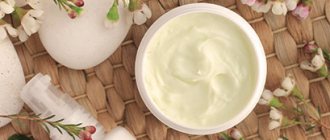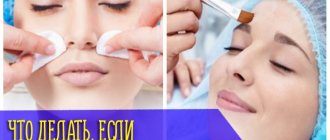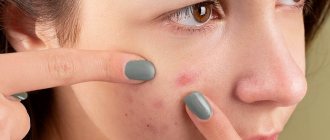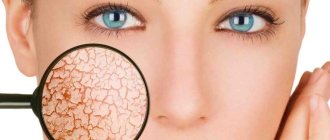Today we will try to answer the question: “After peeling, there are red spots on the face, what should I do?”, which clients often ask cosmetologists.
As you know, peeling is a procedure for cleaning the face, neck, hands and décolleté. This cleansing occurs in the following way: the keratinized layer of dead cells is removed from the skin and toning, cleansing and natural rejuvenation occurs. Most often, this procedure is painless and causes virtually no side effects. But it is enough not to follow just one recommendation or rule, and negative consequences or side effects can practically not be avoided. Not in all cases, after the appearance of such side effects or undesirable consequences, you should contact a specialist. But it should be remembered that with further complications, it is necessary to undergo examination by a dermatologist.
Cause of red spots and itching
Red spots after peeling can be called normal, because the chemicals and substances used cause just such a reaction. Often, redness appears immediately after the facial cleansing procedure, and disappears after approximately 3 hours from the moment of cessation. But there are times when the redness goes away only after a few days. The duration and intensity of facial redness depends on the individual characteristics of the skin, highly sensitive skin and the concentration of the product used for peeling.
Itching on the face appears on the 2nd or 3rd day and lasts from 2 to 5 days. If it is irritating and difficult to tolerate, you can apply a cold compress to your face or take an antihistamine. Next, you will need to keep your skin moisturized and take anti-allergy medications to relieve itching.
Severe redness after deep peeling, including glycolic peeling. This skin reaction is caused by dilation of blood vessels located close to the surface of the skin, called persistent erythema.
Why does Quincke's edema occur?
Urticaria with angioedema appears after allergens enter the body, causing degranulation of mast cells. Physical factors (cold, heat, solar radiation, insect bites), as well as chemical compounds in small doses dissolved in ordinary water, can also provoke an allergic reaction to urticaria. Much more often, hives are triggered by food allergens and ingredients of popular medications.
Quincke's edema is essentially a complication of urticaria, when the pathological process covers not only the upper layers of the skin, but penetrates deeper and involves the mucous membranes, subcutaneous fatty tissue and muscles. Less commonly, Quincke's edema develops as an independent disease.
In more than 25% of patients with urticaria, the leading role in its development and angioedema is played by a hereditary factor; in another third, such phenomena are acquired during life.
With any clinical type of urticaria, the permeability of small blood vessels increases significantly. The surrounding tissues quickly swell, and under the influence of excess histamine, large blisters form on the surface of the skin. The allergic reaction gradually affects the deep layers of the skin and subcutaneous tissue - this is how angioedema begins.
Cosmetologists will tell you how to avoid spots on your face
The procedure has unpleasant accompanying aspects, which include redness, itching, peeling and increased sensitivity of the epidermis. But they are short-lived and disappear within 2 hours. Sometimes they finally go away after about 4 days, but these side effects should not cause much discomfort if the procedure is performed correctly.
If peeling was carried out at home or proper facial care was not followed after a professional procedure, then more severe complications cannot be avoided. There are rare cases when serious complications arise due to the inexperience of the cosmetologist performing the procedure in the salon.
In order to reduce the likelihood of complications, you need to follow some advice given by cosmetologists:
- first of all, when going to a specific beauty salon, you need to find out as much as possible about this establishment, read reviews on the Internet, ask your friends. This is important in order to eliminate the risk of falling into the hands of an unqualified cosmetologist;
- You should not carry out the chemical peeling procedure yourself for the first time. It’s better to go to a salon, where a specialist will answer your questions, explain important points and tell you how to correctly carry out this procedure step by step. Also in the salon you will feel the results for yourself;
- you need to find out if there are any allergies to the substances used;
- It is necessary to study in detail all contraindications to the procedure. It is worth noting that girls who are planning a pregnancy in the near future or are already pregnant. And also during lactation, you cannot use yellow, also known as retinoic, peeling. And those who have very sensitive skin should avoid dairy products;
- The first days after, the skin does not look very attractive, and you should not stay in the sun for too long. During the course, as well as a few days after, it is recommended to be outside as little as possible, so we advise you to take a few extra days off from work.
Nutrition and diet for allergic urticaria
Manifestations of the disease often occur when eating certain foods
Therefore, it is very important to determine which of them provoke a negative reaction and eliminate irritants from your diet. This requires a strict diet
A hypoallergenic diet will help control the situation and avoid the manifestations of hives. Talk to your doctor and have him provide you with a list of approved foods.
What can you eat if you have allergic urticaria?
The menu should contain low-allergenic products:
- Lean meat (veal, chicken, turkey)
- Low-fat fish
- Oatmeal, rice, pearl barley porridge
- Potato
- Vegetable oil (sunflower and olive)
- Fermented milk products (low-fat kefir, fermented baked milk, cottage cheese, yogurt)
- Green apples, pears
- Fresh cucumbers, squash, spinach, white cabbage, zucchini.
You need to exclude highly allergenic foods from your diet.
- Berries (strawberries, raspberries, cherries, blueberries, sea buckthorn)
- Fruits (citrus fruits, grapes, pineapple, persimmon, melon)
- Vegetables (beets, eggplants, peppers, pumpkin)
- Sorrel
- Sweet carbonated drinks
- Honey
- Chocolate, sweets
- Whole milk
What do temporary side effects look like?
Almost all girls and women who used chemical peeling on themselves noticed that after this their face itched, peeling and irritation appeared.
After peeling, the face looks inflamed for the first couple of hours, but the redness will go away if you follow the cosmetologist’s advice on skin care after such a procedure.
After the procedure, you may feel as if the skin is tightening; this can be combated with a high-quality nourishing cream.
Mild burning and irritation on the skin is also a temporary problem after the procedure. This occurs due to the use of acid during the procedure.
Sometimes, this happens quite rarely, a chemical burn appears.
Strontium nitrate as an inhibitor of neurogenic inflammation.
Studies of the effect of strontium salts on skin irritation caused by various chemical agents were conducted at the University of California (San Diego, USA)22. Strontium chloride and nitrate have been used as irritant blockers. The chemical irritants used were 7.5% lactic acid, 70% glycolic acid, 4% calcium triglycolate (a component of depilatory cream) and aluminum salts. Skin irritation, which manifested itself mainly in the form of a sensory reaction, was assessed according to the subjective feelings of the subjects on a 4-point scale: 0 - no irritation; 1 - quickly passing, barely noticeable sensation of skin irritation; 2 - a certain feeling of irritation that worries the subjects; 3 - very unpleasant sensations; 4 - intense sensations that are difficult to endure.
When 7.5% lactic acid (pH 1.9) was applied to the skin, skin irritation reached medium values (1-1.5) 1 minute after application and a maximum value (2-3) over the next 3-7 minutes. When a mixture of 7.5% lactic acid and strontium nitrate (concentration 500 mM) was applied to the skin, skin irritation decreased by an average of 67% (calculation was based on a comparison of the areas under the experimental curves).
Skin irritation caused by an alkaline depilatory cream (pH 12) based on calcium triglycolate was also significantly inhibited by strontium nitrate. The experiment involved 23 people who applied the cream to 506 areas of skin. The results of comparing the degree of skin irritation in these areas in the control and experimental groups are given in Table. 1.
| Table 1. Studies of the irritant effect of depilatory cream (CD) | ||
| Skin irritation | KD | KD + strontium nitrate |
| Strong (4) | 0 | 0 |
| Average (3) | 7 | 2 |
| Weak (2) | 45 | 11 |
| Slightly noticeable (1) | 88 | 53 |
| Missing (0) | 113 | 187 |
After applying 70% non-neutralized glycolic acid (pH <1) to the skin of the forearm of 11 people (121 areas), burning, tingling and itching were observed in all cases, which reached a maximum 3 minutes after application (3.5 points). The addition of strontium nitrate to 70% glycolic acid made it possible to significantly (81%) reduce the intensity of skin irritation. Comparative results are presented in table. 2.
| Table 2. Irritant effect of 70% glycolic acid (GA) | ||
| Skin irritation | 70%HA | 70% HA + strontium nitrate |
| Strong (4) | 30 | 0 |
| Average (3) | 39 | 8 |
| Weak (2) | 37 | 5 |
| Slightly noticeable (1) | 6 | 27 |
| Missing (0) | 9 | 81 |
Unlike lidocaine and novocaine, strontium salts reduced the degree of skin irritation without affecting tactile and pain sensitivity, which is an important point when carrying out deep peeling. Studies have shown that 20% strontium nitrate applied to the skin does not change its sensitivity to cold, heat, pain.23 The effect of strontium nitrate on C-receptors is also confirmed by the fact that itching caused by histamine (a direct stimulator of C-receptors), with strontium nitrate is significantly suppressed.24
Is strontium safe?
Every time a new ingredient appears, a natural question arises: will it act for the benefit of our skin or only for the benefit of those who produce and sell cosmetics. On the one hand, strontium is found in sea water, algae, spinach and some other plants, on the other hand, it is obvious that it can actively interfere with cell physiology, affecting calcium metabolism. For now, only one thing can be said - European legislation has approved strontium nitrate and recognized it as safe. There is no data in the literature on the negative effects of strontium on cells if it is not radioactive. We can probably conclude that the introduction of strontium into deep peeling products, which are on the skin for no more than 10-15 minutes and are used quite rarely, is quite acceptable. By blocking the release of neurotransmitters from free nerve endings, and perhaps directly inhibiting the production of inflammatory cytokines in skin cells, strontium nitrate may significantly reduce skin damage during chemical peels. A separate study requires the question of whether it is possible (and whether it is necessary) to introduce strontium salts into cosmetics that are on the skin for a long time or are used regularly, as well as in medicinal cosmetics that may end up on damaged skin.*
*In humans and animals, strontium accumulates in bone tissue and affects the process of bone formation. Excess strontium causes brittle bones (“strontium rickets”). — Approx. ed.
Conclusion
Glycolic acid peeling is the most common means of eliminating the symptoms of skin photoaging. Changes such as solar keratosis, elastosis, age spots require the use of fairly high concentrations of glycolic acid (up to 70%). In order to reduce skin irritation, partially neutralized glycolic acid (pH 3.5-4) is used. It has been experimentally shown that the effectiveness of peeling depends not only on the concentration, but also on the acidity (pH) of the formulation - the lower the pH, the better the final result. When the pH decreases, the clients' tolerance to the procedure deteriorates significantly. To reduce skin irritation during peeling, various additives are used: cola extract, green tea, grape seed extract, and pre-peel preparation of the skin is also carried out. A new promising means of inhibiting skin irritation during chemical peeling is strontium nitrate. Nowadays, strontium nitrate has already been approved for use in the cosmetics industry, and now the Western media is talking about “breaking the irritation barrier.”25 Well, let’s hope that chemical peeling without skin irritation is actually will be a new step in the fight against premature aging.
Bibliography
- Gilchrest BA. “A review of skin aging and its medical therapy.” Br J Dermatol 1996; 135(6): 867-875.
- Slavin JW. "Considerations in alpha hydroxy acid peels." Clin Plast Surg 1998; 25(1): 45-52.
- Draelos ZD "Sensitive skin: perceptions, evaluation, and treatment." Am J Contact Dermat 1997; 8(2): 67-78.
- Draelos ZD. “Treating the patient with multiple cosmetic product allergies. A problem-oriented approach to sensitive skin.” Postgrad Med 2000; 107(7): 70-72, 75-77.
- Basketter DA, Griffiths HA. "A study of the relationship between susceptibility to skin stinging and skin irritation." Contact Dermatitis 1993; 29(4): 185-188.
- Coverly J, Peters L, Whittle E, Basketter DA. “Susceptibility to skin stinging, non-immunologic contact urticaria and acute skin irritation; Is there a relationship?" Contact Dermatitis 1998; 38(2): 90-95.
- Lammintausta K, Maibach HI, Wilson D. “Mechanisms of subjective (sensory) irritation. Propensity to non-immunologic contact urticaria and objective irritation in stingers.” Derm Beruf Umwelt 1988; 36(2): 45-49.
- Simion FA, Rhein LD, Morrison BM Jr, Scala DD, Salko DM, Kligman AM, Grove GL. "Self-perceived sensory responses to soap and synthetic detergent bars correlate with clinical signs of irritation." J Am Acad Dermatol 1995; 32(2 Pt 1): 205-211.
- "Current Dermatology" ed. Adeskevich V.P. M: Medical book, N. Novgorod: publishing house NGMA, 2000. - 306 p.
- Sann H, Pierau FK. "Efferent functions of C-fiber nociceptors." Z Rheumatol 1998; 57(Suppl 2): 8-13.
- Ansel JC, Armstrong CA, Song I, Quinlan KL, Olerud JE, Caughman SW, Bunnett NW. "Interactions of the skin and nervous system." J Investig Dermatol Symp Proc 1997; 2(1): 23-26.
- Misery L “Skin, immunity and the nervous system.” Br J Dermatol 1997; 137(6): 843-850.
- Smith W.P. "Hydroxy acids and skin aging" Cosmetics & Toiletries 1994; 41: 41-48.
- Becker FF, Langford FP, Rubin MG, Speelman P. "A histological comparison of 50% and 70% glycolic acid peels using solutions with various pHs." Dermatol Surg 1996; 22(5): 463-465.
- Minkoff S, Axelrod S. “Efficacy of strontium chloride in dental hypersensitivity.” J Periodontol 1987; 58(7): 470-474.
- Addy M, Dowell P “Dentine hypersensitivity - a review. Clinical and in vitro evaluation of treatment agents.” J Clin Periodontol 1983; 10(4): 351-363.
- Boivin G, Deloffre P, Perrat B, Panczer G, Boudeulle M, Mauras Y, Allain P, Tsouderos Y, Meunier PJ. "Strontium distribution and interactions with bone mineral in monkey iliacal bone after strontium salt (S 12911) administration." Bone Miner Res 1996; 11(9): 1302-1311.
- Zhai H, Hannon W, Hahn GS, Pelosi A, Harper RA, Maibach HI. "Strontium nitrate suppresses chemically-induced sensory irritation in humans." Contact Dermatitis 2000; 42(2): 98-100.
- Silinsky EM Mellow AM. “The relationship between strontium and other divalent cation in the process of transmitter release from cholinergic nerve endings” In: Skoryna SC, ed. Handbook of Stable Strontium. New York:Plenum, 1981:263-285.
- Celerier P, Richard A, Litoux P, Dreno B. "Modulatory effects of selenium and strontium salts on keratinocyte-derived inflammatory cytokines." Arch Dermatol Res 1995; 287(7): 680-682.
- Peachell PT, Pearce FL. "Divalent cation dependence of the inhibition by phenothiazines of mediator release from mast cells." Br J Pharmacol 1989; 97(2): 547-555.
- Hahn G.S. "Strontium is a potent and selective inhibitor of sensory irritation." Dermatol Surg 1999; 25(9): 689-694.
- Zhai H, Hannon W, Harper RA, Hahn GS, Alessandra P, Maibach HI. “Strontium nitrate decreased itch magnitude anf duration without effecting thermal pain or sensation in experimentally-induced pruritis in man” submitted 1998
- Zhai H, Hannon W, Hahn GS, Harper RA, Pelosi A, Maibach HI. "Strontium nitrate decreased histamine-induced itch magnitude and duration in man." Dermatology 2000; 200(3): 244-246.
What side effects are not normal after procedures?
Hyperemia occurs in women with very sensitive skin who have undergone the procedure, and also appears after a high concentration of drugs used during chemical peeling. But this is not the classic redness that occurs during the procedure.
Red spots and a flushed face are the result of chemical peeling. But if they do not go away within several days, you should consult a doctor - a dermatologist or cosmetologist.
Due to the use of acid in the procedure, the skin can be severely injured and a chemical burn occurs. This phenomenon is quite rare, one might even say unique, but it can still happen. In this case, the dermatologist will prescribe special medications to eliminate the consequences of the burn.
When conducting a preliminary examination of the skin, which is a mandatory step before prescribing chemical peeling of the face, all possible contraindications to the procedure should be identified. If herpes on the face has not been diagnosed, but it is present, scars and scars may appear on the surface of the face after peeling, which cannot always be eliminated without leaving a trace.
Symptoms of allergic urticaria
- A skin rash that quickly appears after contact with an allergen consists of individual flat blisters of pale pink or red color.
- The size of the blisters ranges from a few millimeters to several centimeters, making them similar to a nettle burn or ordinary burns; their number is also variable - from a few to many small blisters.
- A distinctive feature of allergic urticaria is that the blisters have clear boundaries, and when you press on such a blister, it takes on the color of healthy skin and disappears, only to appear again after the pressure is removed.
- The rash is accompanied by characteristic severe itching.
- Sometimes the blisters merge with each other, forming plaques.
- Depending on the strength of the reaction, in addition to skin rashes, vomiting and nausea may occur, especially if the allergy affects the mucous membranes of the esophagus.
Recommendations from cosmetologists
Before you begin, you need to carefully study all possible options for cleansing the skin, identify contraindications, study side effects and how to get rid of them, and figure out what type of skin you have. You need to consult with a dermatologist about the need for the procedure and find out from the cosmetologist which option, in his opinion, is most suitable for you.
A slightly red face after peeling is not so scary, it is a natural reaction to a procedure using a chemical substance. A cosmetologist will help you remove redness and will tell you exactly what needs to be done, what precautions you should take, and what facial products to use. If you have any questions, you will definitely be consulted, and if complications arise, you can be examined by a dermatologist.
After peeling, it is prohibited to do certain procedures that can seriously injure the skin and cause irreparable damage:
- you need to avoid tanning in the sun and in the solarium for the period established by the cosmetologist; even being on the street for a long time is also undesirable;
- you cannot steam your face (steam bath) or make scrubs;
- You should avoid visiting a public swimming pool, any other bodies of water, as well as saunas and steam baths;
- do not abuse physical activity and other activities that stimulate sweat production and increase blood flow to the face;
- do not be in the wind;
- touching your face should be kept to a minimum;
- do not use decorative cosmetics until the skin is completely restored;
- avoid using facial skin care products; the cosmetologist will prescribe you the most suitable medications that will help restore the epidermis and eliminate side effects;
During the recovery period after peeling, you need to choose skin care products that have a moisturizing effect.
It is important to use sunscreens with the maximum degree of skin protection from exposure to ultraviolet rays when going outside; these products should be used even in cloudy weather.
Main principles of skin care after chemical peeling
Regardless of the type of peeling used and the degree of its penetration into the layers of the skin, there are a number of requirements that must be strictly observed during the recovery period.
Under no circumstances should you touch your face on the first day . This means that any procedures related to washing, applying moisturizers, etc. are prohibited. The only exceptions are special instructions from a cosmetologist regarding the specifics of the procedure itself. For example, with retinoic or yellow peeling, you will need to remove the product from your face yourself in strict accordance with the recommendations received. It is undesirable to touch your face in the following days, since injured skin is very susceptible to the action of bacteria that can cause serious inflammatory processes.
You can only wash your face the next day with clean boiled water . The cleansers used should be mild and should be applied to the face carefully, using your fingertips. During the recovery period - and after chemical peeling, it can take up to 2 months - you should avoid using scrubs, which will further injure the epidermis and can lead to scarring.
To alleviate the condition, as well as to prevent the skin from cracking and cracking whenever severe tightness appears, it is recommended to use moisturizing gels or foams that are easy to apply and absorb well. It is better not to use creams at first - their time will come when the skin begins to peel off. In this case, it is advisable to select products with moisturizing, antioxidant, anti-inflammatory, regenerating properties - the composition will include selenium, omega acids, Shea butter, hyaluronic acid, retinol, etc.
An excellent product for moisturizing the skin and accelerating the regeneration process is Panthenol spray - it is advisable to purchase it in advance and always have it on hand. Panthenol is generously applied to the facial skin several times a day (3-4 after superficial peeling and 7-8 after medium peeling) until the skin is completely restored. Excess Panthenol should be easily removed with a clean cloth after a quarter of an hour. Despite all the advantages of Panthenol, it must be used in accordance with the recommendations: after superficial chemical peeling - a day later, after medium peeling - no earlier than 3-4 days (by this time a strongly constricting film will appear on the face, with a color ranging from normal to brown).
No one denies the positive effects of various soothing masks made from natural ingredients on irritated skin, but it is better not to resort to them on your own during the post-peeling period. Here you need a preliminary consultation with a cosmetologist, since even the most familiar product can become a strong allergen and cause irritation.
Results
There are still complications after such a simple procedure as peeling, but this only happens when the recommendations and restrictions were not followed immediately before and after such a procedure. If this happened and you were unable to follow all the recommendations of a specialist at a beauty salon, then if complications or unwanted side effects occur, you need to contact a dermatologist. In the case of slight redness, it is enough to follow the recommendations described above and facial problems in this case will be completely eliminated.
Health and good luck to you.

